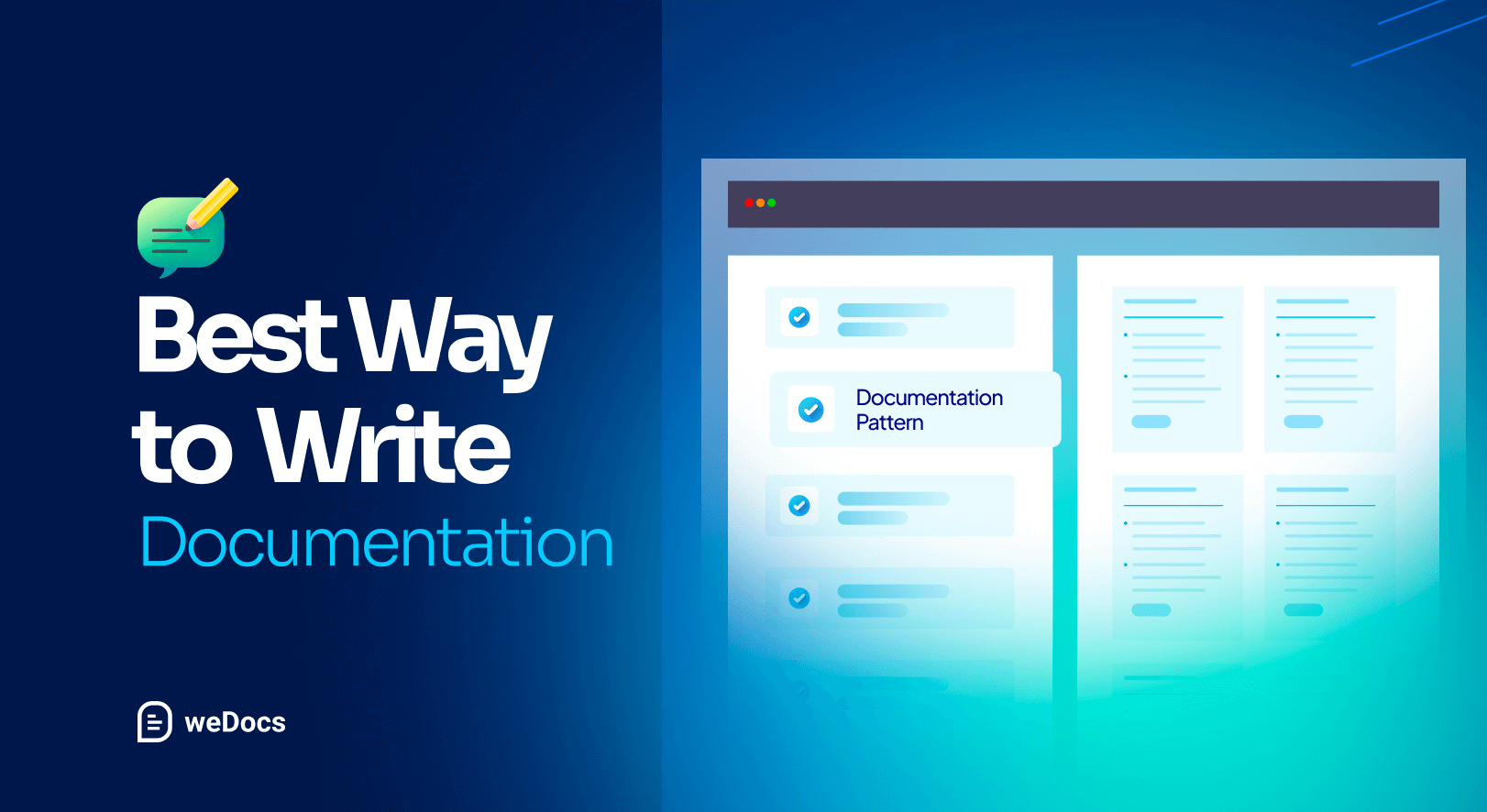The best way to let users know how your product works is through clear and concise product documentation. Before coming to live chat or support, customers usually look for documentation to learn how to use the product or its features.
But if your documentation isn’t clear, then you are in trouble. Not only will it throw off your customers, but it will create the impression that your product is hard to use.
You certainly don’t want that, right? That is why in this post, we will go over how to write clear documentation and also share my experience on how I write documentation.
We have already written a blog on writing a clear and concise documentation. This is the next part of the blog.
Let’s get started-
Why You Need Documentation & Why It Should Be Clear
Imagine a world where you didn’t have to explain the same thing over and over. Well, that’s what documentation can do. Whether you’re writing a technical manual for a product or a knowledge base for a team, documentation makes things more efficient and organized.
Importance of Documentation:
- Provides a reference point: Documentation ensures that everyone involved has access to the same information, creating a single source of truth.
- Streamlines communication: It helps reduce misunderstandings by clearly outlining procedures, guidelines, and expectations.
- Facilitates onboarding: New team members can quickly familiarize themselves with processes, tools, and procedures without needing constant help.
- Improves troubleshooting: For users, having well-documented guides makes it easier to identify problems and find solutions without relying on support.
When documentation is clear, it serves as a reference point for everyone involved. It ensures consistency and reduces misunderstandings.
Benefits of Clear Documentation:
- Prevents confusion
- Reduces errors
- Saves time and resources
- Enhances user experience.
Now lets see how to write clear and concise documentation.
Tips to Write Clear and Concise Documentation:
Writing clear and concise documentation can make a world of difference in how your users or team interact with your product, service, or system.
Whether you’re creating a user guide, API documentation, or an internal knowledge base, your goal should always be to provide the right information in the most digestible way possible. Poorly written documentation leads to frustration, mistakes, and wasted time, while good documentation can save you all of that.
Clear documentation doesn’t just tell someone how to do something; it helps them understand the process, troubleshoot effectively, and work more efficiently.
Below are some essential tips that will help you create documentation that is not only clear but also concise and user-friendly.
Keep It Simple
The first rule of clear documentation is simplicity. Avoid complex terms, jargon, or overly technical language unless necessary. Your goal should be to communicate ideas in the simplest way possible so that anyone, regardless of their technical background, can understand the content.
Think of your audience: they might not be as familiar with the subject as you are, so make your language approachable and easy to grasp.
Be Direct
Readers often skim documentation, so don’t make them hunt for the main points. Start with the essential information upfront, and get straight to the point.
Avoid long-winded explanations and focus on the action steps, facts, or answers your reader needs. Use short, clear sentences that highlight key takeaways and minimize unnecessary fluff.
Use Bullet Points and Numbered Lists
Bullet points and numbered lists are powerful tools for organizing information in a visually digestible way. Use them to break down instructions or ideas into manageable chunks.
Bullet points work well for highlighting key concepts or lists of steps, while numbered lists are perfect for step-by-step guides, making it easier for the reader to follow the flow of information.
Structure Your Docs
Good structure is essential for easy navigation. Use headings, subheadings, and sections to manage your document logically.
This not only makes your documentation more visually appealing but also helps the reader quickly find the specific information they’re looking for. A clear, consistent layout helps guide readers through the document without confusion.
Include Examples
Words alone can sometimes be abstract, but examples ground concepts in real-world scenarios. Including practical examples or visuals like screenshots, code snippets, or step-by-step images, helps your reader see how the information applies in practice.
This is especially important for technical documentation or processes that may not be immediately intuitive.
Use Consistent Terminology
Consistency in your terminology is key to maintaining clarity. If you refer to something in one section, make sure to use the same term throughout the entire document.
Using different terms for the same concept can confuse the reader and make your documentation harder to follow. Stay consistent with naming conventions, formatting, and structure.
Proofread and Edit
Never underestimate the power of proofreading. A document filled with spelling mistakes, grammatical errors, or unclear instructions will frustrate the reader and hurt your credibility.
Always read through your documentation before finalizing it, and consider having someone else review it as well. Editing ensures that your message is clear, concise, and free of mistakes. You will have the room to improve the documentation.
How I Write Documentation That is Clear and Easy to Understand
As a veteran in the marketing industry, I have been planning and writing technical documentation for over 6 years now. I have handled documentation of big-name products like Dokan, WP ERP, weMail, Appsero, WP User-Frontend, WP Project Manager, and many more.
Over the years, I have learned some tricks to write documentation that is easy to understand for the users. Here they are-
- Get the full brief about the product or its features from the developer or the product manager. Understand their vision and what problem they are trying to solve. This will give you a clear idea about the customer mindset and how to approach the document.
- Test the feature or product before writing the documentation. This way you will know where the customers might face any trouble and how to solve it.
- While testing the product, take screenshots. Use arrows and numbers to mark the button the user needs to click to enable the feature.
- Mentally create the structure on your head. A brief introduction, what you will show the user, and how this feature will help the user. Then what steps to show.
- While writing, keep the tone as simple as possible. Think as if your customers don’t know anything. Imagine you are writing for your grandma. That will help. Use precise navigation (e.g., go to WP-Admin–> Dashboard–> Menu) so that users understand where exactly they need to go.
- Use GIFs and videos to show the whole process.
- Don’t write a long documentation. Break it and make two separate documents if the initial document becomes too long. Readers may feel overwhelmed while reading a long document.
- Get a good idea about the product or feature. Good domain knowledge will help you write a better document and understand the customer pain point easily.
How weDocs Helps in Writing Clear and User-Friendly Documentation
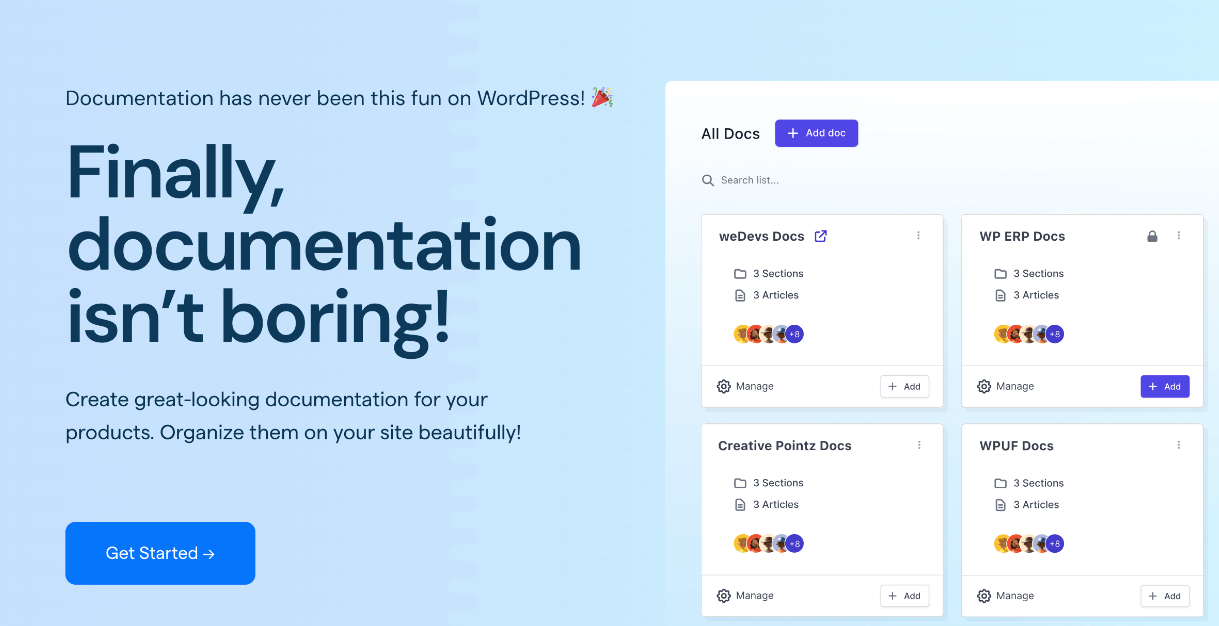
Creating clear and organized documentation can be a time-consuming and challenging process. Thankfully, weDocs makes it easier, offering a range of powerful tools designed to simplify the documentation creation and management process.
Here’s how weDocs can help you write clear and user-friendly documentation:
Clean and Easy to Navigate User Interface
weDocs offers a clean, easy-to-navigate interface that makes documentation creation feel effortless. With just a few clicks, you can create new documents and manage them efficiently. The platform is designed with simplicity in mind, so you don’t need technical expertise to get started.
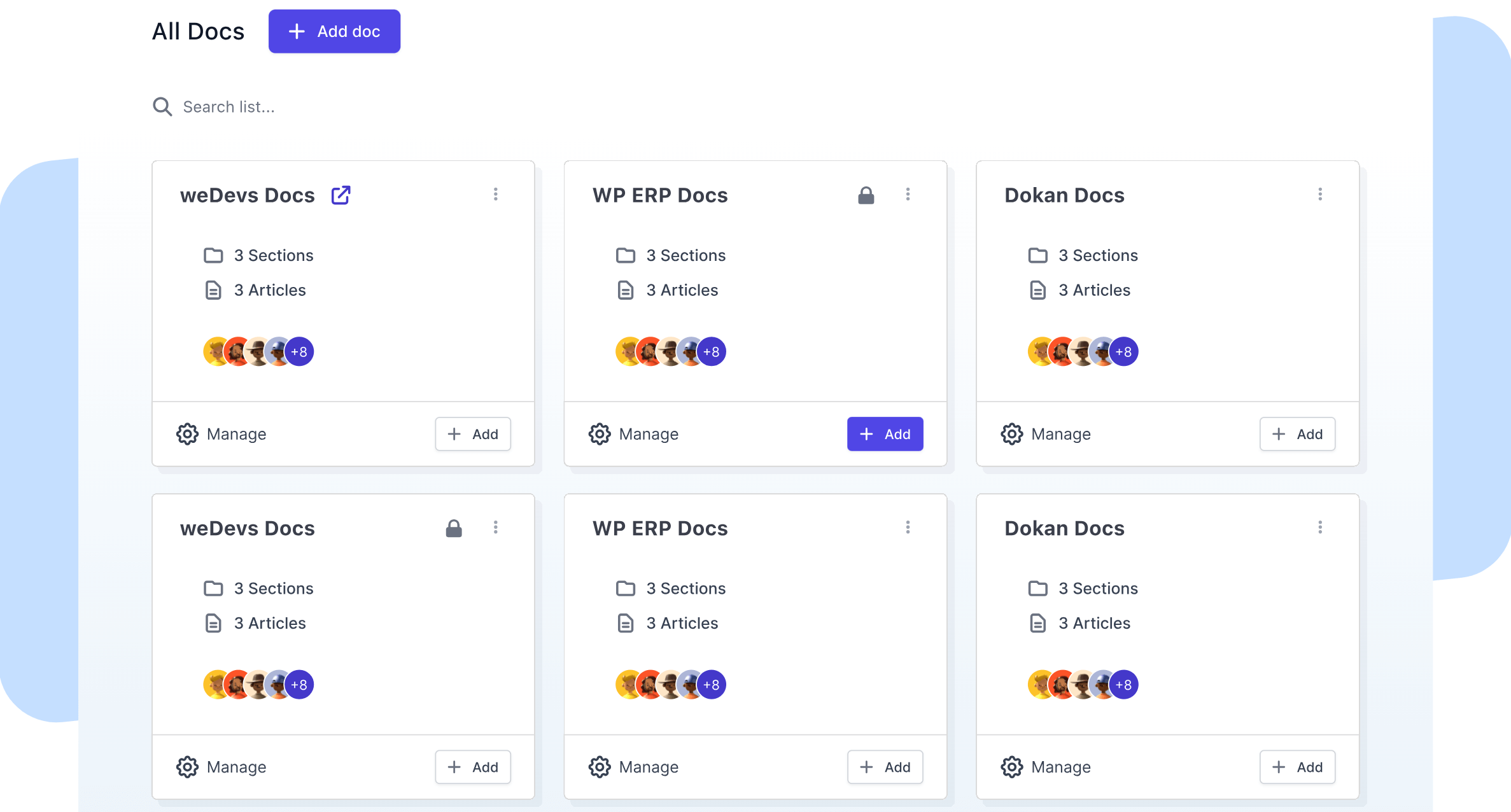
If you’re writing a user guide or internal knowledge base, the intuitive design ensures a smooth writing experience.
Drag and Drop Feature
Organizing your documentation is simple with weDocs’ drag-and-drop functionality.
You can quickly sort and structure your documents according to your preferred hierarchy or topic structure. This flexibility helps you maintain clarity and ensures your documentation remains easy to follow and update as needed.
Searchable Content
weDocs increases the user experience by integrating live search functionality. This Ajax-powered search allows users to find the information they need instantly, whether it’s through a general search or by filtering documents based on tags or categories.
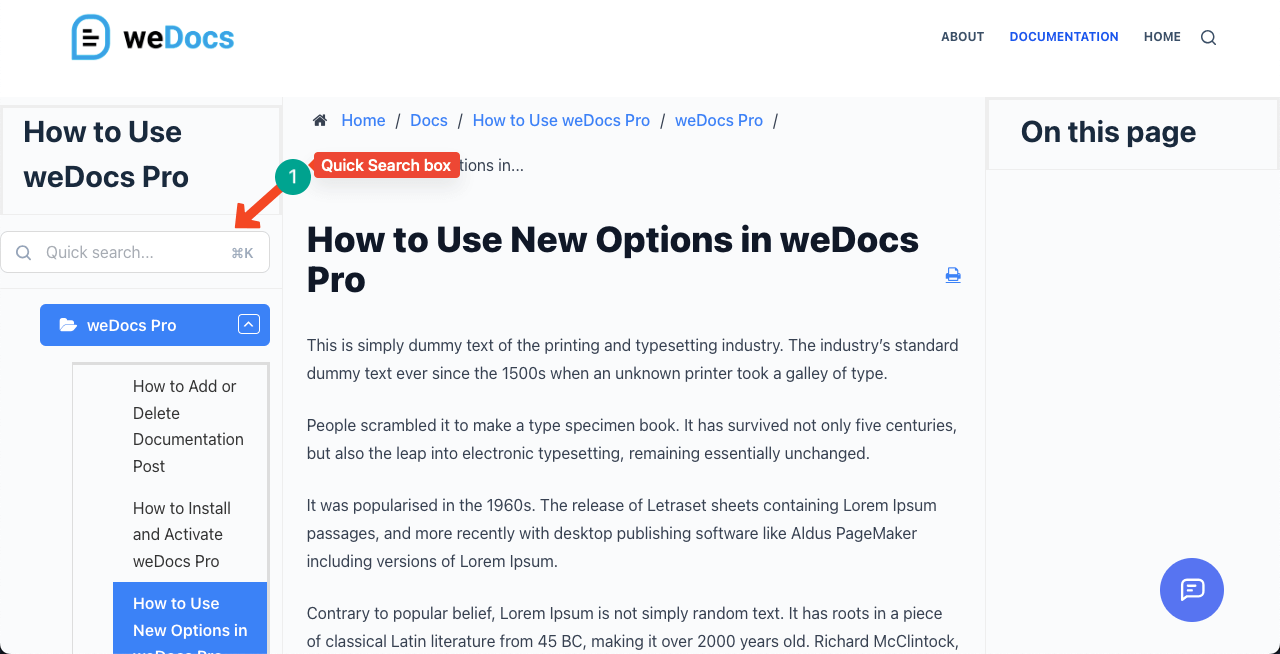
The fast search functionality ensures that users don’t waste time scrolling through long documents to find what they’re looking for.
Multilingual Support
With weDocs, you can easily manage multilingual documentation. The platform integrates seamlessly with the Weglot plugin, allowing you to translate your documentation into over 100 languages.
This feature is perfect for reaching global audiences and ensuring that your documentation is accessible to people across different regions.
Customizable Templates
weDocs provides a wide range of customizable templates that allow you to align your documentation with your brand’s style.
You can mix and match templates or use your own to create a cohesive, professional look for your documents. This customization ensures that your documentation is not only functional but also visually appealing.
Advanced Permission Management
weDocs offers fine-grained control over who can view or edit specific documents. You can assign different permissions based on user roles, making it easy to manage internal and external documentation separately.
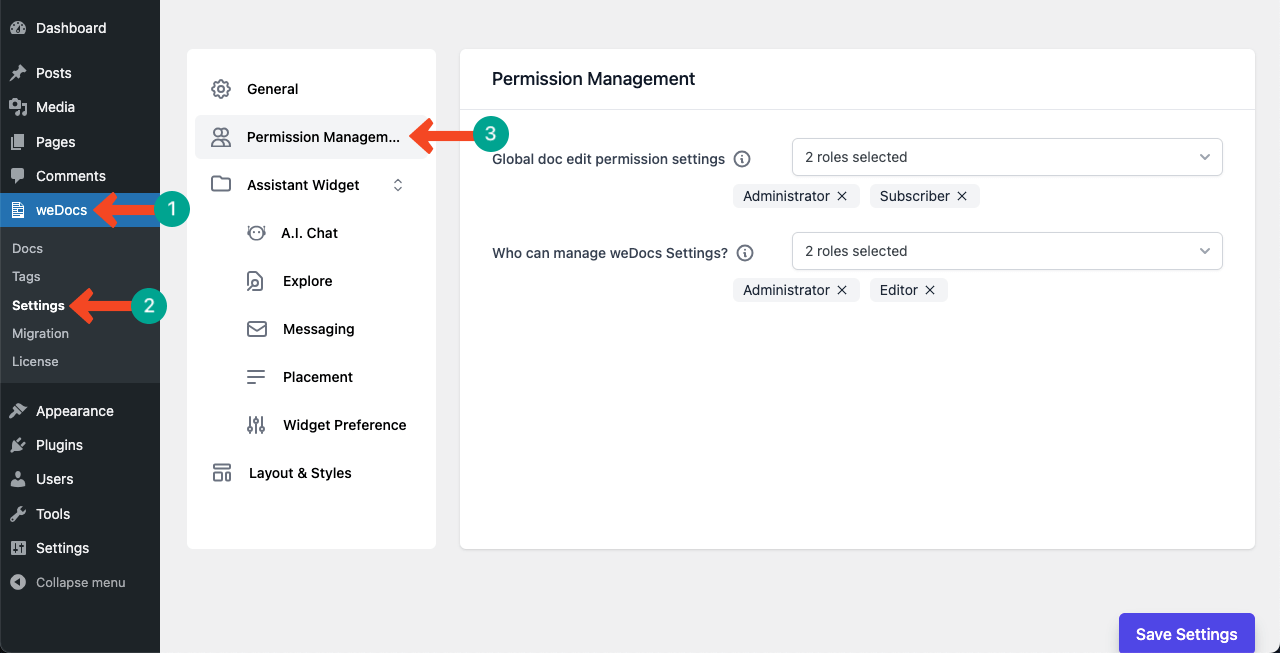
This feature ensures that sensitive content is kept private while allowing broader access to public-facing documents.
AI-Powered Chatbot Integration
With weDocs AI Chatbot, powered by ChatGPT, you can provide instant, intelligent responses to users. The chatbot learns from your documentation and can answer common questions, reducing support requests and ensuring users always have access to the information they need in real time.
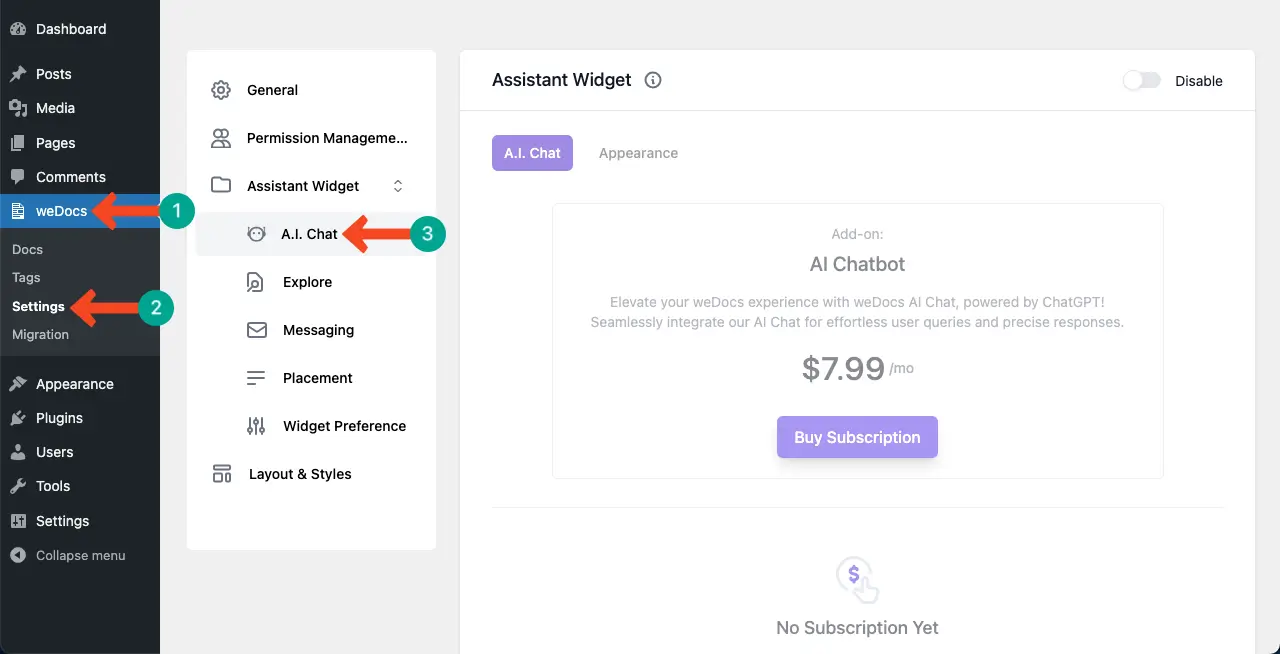
This feature helps enhance the user experience and makes your documentation even more user-friendly.
SEO Optimization
weDocs integrates with popular SEO plugins like Yoast SEO, ensuring your documentation is optimized for search engines.
This helps increase visibility and makes it easier for users to find relevant documentation directly from search engines.
Embed Anywhere Using Shortcodes
weDocs allows you to embed documentation content anywhere on your website using simple shortcodes.
Whether you’re using Elementor or another page builder, the integration is seamless, ensuring that your docs are easily accessible from any page on your site.
Real-Time Collaboration
If you’re working with a team, weDocs allows for real-time collaboration on documentation. Multiple team members can work on the same document simultaneously, streamlining the creation and updating process.
This collaborative approach helps ensure that your documentation stays current and comprehensive.
Clear Documentation, Better Product Understanding
Writing clear and concise documentation is essential for creating an efficient, user-friendly experience for your team or your customers.
With weDocs, the process of creating, organizing, and maintaining documentation becomes straightforward and efficient. Its intuitive design, customizable templates, and powerful features like AI-powered chatbots and live search help ensure that your content is accessible, engaging, and easy to navigate.
By using weDocs’ capabilities, you can reduce confusion, save time, and provide a seamless experience for users who rely on your documentation.
If you’re managing internal knowledge bases, creating product documentation, or offering customer support materials, weDocs provides all the tools you need to create documentation that works.
Don’t let documentation become a burden; make it a valuable asset with weDocs!
Subscribe to
weDocs blog
We send weekly newsletters,
no spam for sure!
.png)
